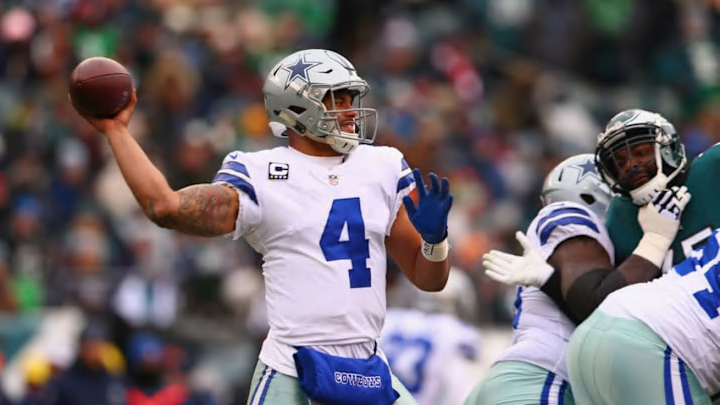
The Dallas Cowboys struggled to throw the ball last year. Halfway through the season they began to run more RPOs. Are RPO’s the key to the Cowboys offense?
The Dallas Cowboys will need to keep up with the Joneses if they want success next season. With an offense that lost its most dangerous receiver, the Cowboys will need to integrate RPOs to having an effective passing game.
In a recent article, Michael Renner of Pro Football Focus describes what constitutes an RPO and what does not:
"At it’s core, the name suggests it all. A run-pass option is a play where the offense has the ability to either run or pass depending on certain factors. That decision is left up to the quarterback and can be made either pre- or post-snap. Because of this, there are two obvious schematic factors occurring that are dead giveaways of an RPO: 1. The offensive line run blocks 2. Some, or all receivers, run pass routes"
He continues to explain why an RPO works in the NFL. It works because the dual threat of the run and the pass prevents the defense from selling out to stop the run or selling out to stop the pass. Using RPO’s gives the offense a numbers advantage in either the run or the pass on each play. The defense is forced to defend both simultaneously making the defense weaker against both.
What Renner fails to relate is how RPOs are used in the NFL. Unlike college football where the RPO is used as a central tenet in the offensive philosophy, NFL teams have used RPOs as constraint plays.
Simply put, constraint plays are designed to keep the defense honest. A screen play or draw would be a typical constraint play. They are designed to use the defensive decision to sell out on the pass rush against it. A successful draw play will make the defensive coordinator think twice about being aggressive. It will also cause the players to pause and be a step slower on the pass rush.
Will be interesting to see how the Pats gameplan for the Eagles RPOs. Jaguars shredded them with same RPO 4 times in first half last week pic.twitter.com/gYJWIPYIjj
— Mike Renner (@mikerenner_) January 30, 2018
Using RPOs as a constraint kept the New England Patriots on their heels for most of their game against the Jacksonville Jaguars. However, when the Jaguars let up off the RPOs, the Patriots were able to sell out on defense and eventually win the game. A few more well timed RPO calls would have sealed the deal for the Jaguars last season.
How could an RPO package help the Cowboys offense?
